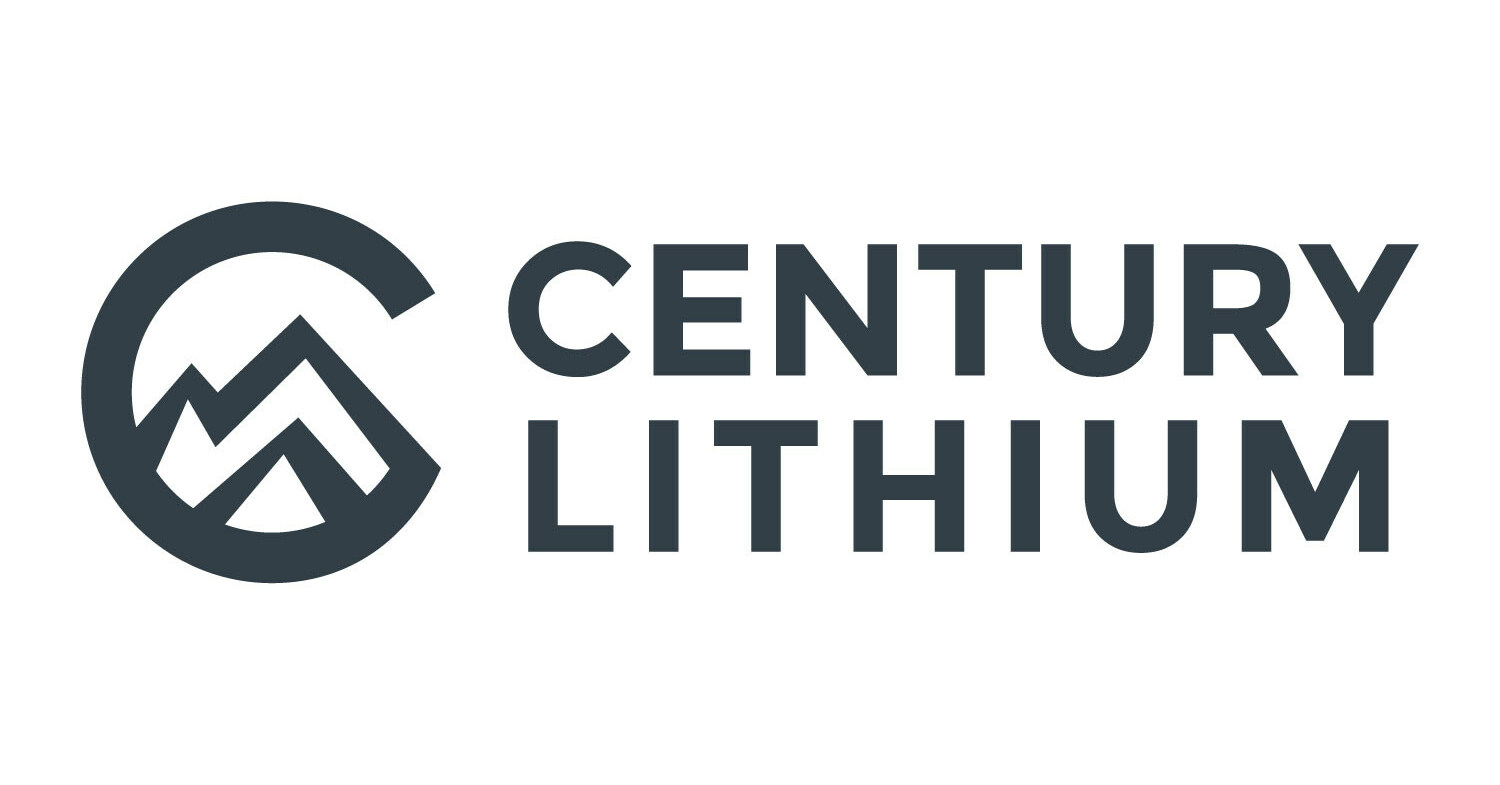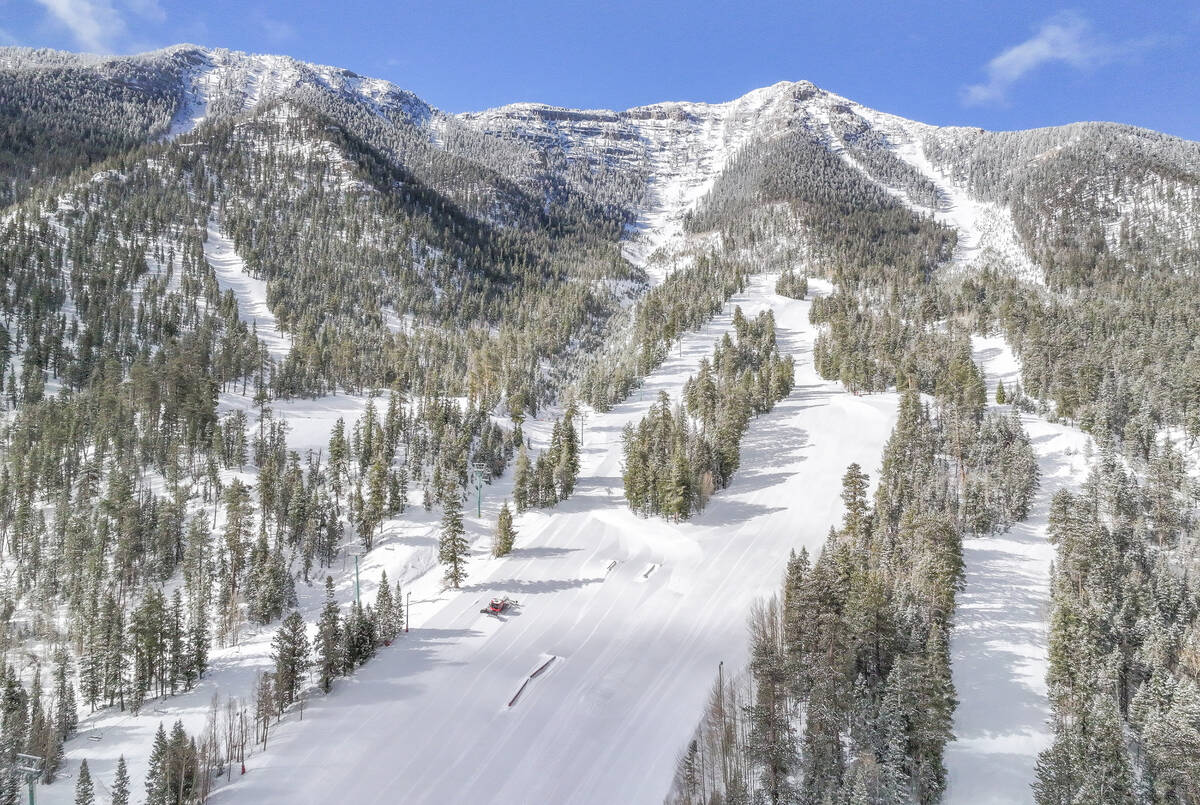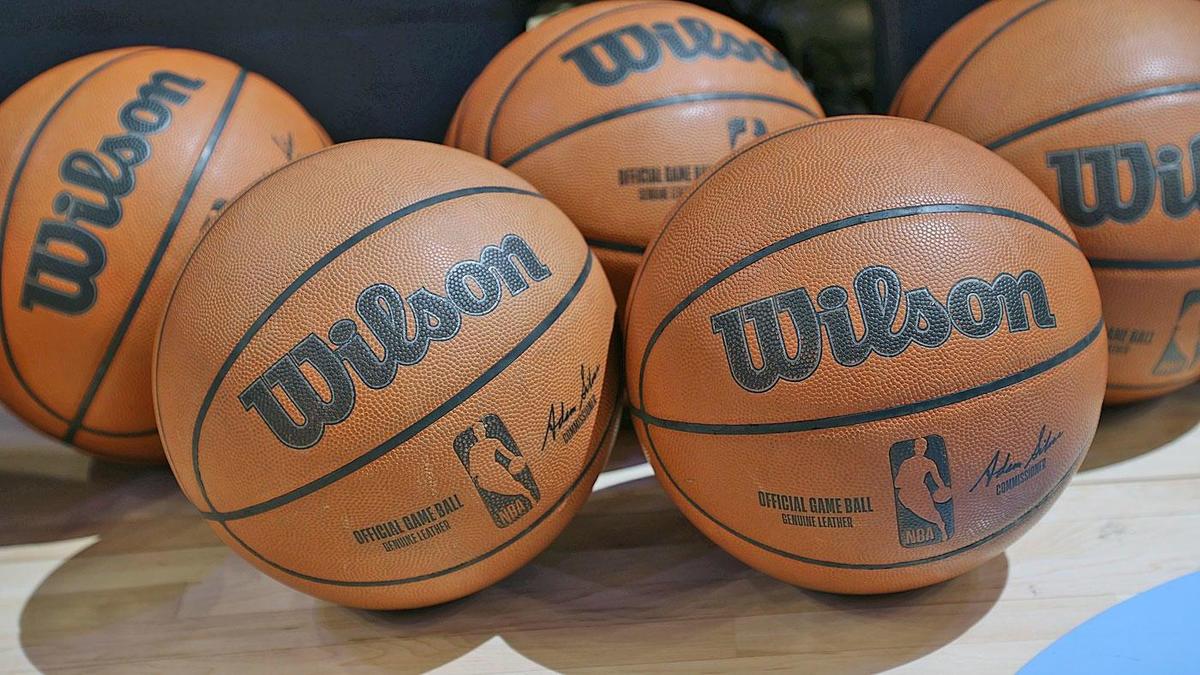Nevada
San Diego Adds Nevada HS State Champion Olivia Anfinson For 2024-25

Fitter and Faster Swim Camps is the proud sponsor of SwimSwam’s College Recruiting Channel and all commitment news. For many, swimming in college is a lifelong dream that is pursued with dedication and determination. Fitter and Faster is proud to honor these athletes and those who supported them on their journey.
Olivia Anfinson has announced her commitment to swim and study at the University of San Diego. Anfinson hails from Las Vegas, Nevada, where she attends Faith Lutheran High School and trains year-round with the Sandpipers of Nevada under coach Michael Kinross.
“I am thrilled to announce my verbal commitment to swim Division 1 at the University of San Diego! I would not be here without the support from God, my family, friends, and the coaches at Sandpipers of Nevada! I also want to thank Coach Mike and Coach Shawna for this amazing opportunity! I am so excited for the next four years! Go Toreros!!”
Anfinson is versatile in terms of what events she swims, but has found success specifically in breaststroke, IM, and butterfly. Highlighting her summer was the Western Zone Senior Championships, where she finished 19th in the 400m IM in a best time of 5:15.28. She was also a finalist in the 200m IM (2:29.72), 100m fly (1:06.43), 200m breast (2:49.05), and 100m breast (1:16.46), with best times in all but one of those events.
More recently, Anfinson raced at Speedo Sectionals in Carlsbad. Her top swim was the 100m breast, as she posted a time of 1:18.76 en route to a 35th place finish overall. She also dropped three seconds in the 400m free to clock a best time of 4:43.71.
Anfinson is also a three-time individual Nevada High School Champion (4A). She secured back-to-back titles in the 100 breast (1:06.09/1:06.32), and added another win in the 200 IM last spring (2:09.18).
Top SCY Times
- 100 breast – 1:05.80
- 200 breast – 2:23.38
- 100 fly – 59.57
- 200 fly – 2:08.54
- 200 IM – 2:09.14
- 400 IM – 4:34.03
The Toreros placed 9th out of 10 teams at the 2024 Mountain Pacific Sports Federation (MPSF) Championships. Anfinson is closest to MPSF scoring range in the 400 IM, as it took a 4:33.31 to advance to the B-final this year.
Anfinson’s best time would have been the team’s 2nd-fastest performer in the 400 IM this season. Leading the way was Skylar Bruner, who logged a 4:32.40 at the La Verne Winter Invitational. Behind Bruner was Gwendolyn Smith, Holly Tarantino, and Hannah Hintermeister, all of whom clocked season best times 4:38.
With her commitment, Anfinson joins Catherine Dueck, Mallory Paine, and Ava Craig in San Diego’s incoming class this fall.
If you have a commitment to report, please send an email with a photo (landscape, or horizontal, looks best) and a quote to [email protected].
About the Fitter and Faster Swim Tour
Fitter & Faster Swim Camps feature the most innovative teaching platforms for competitive swimmers of all levels. Camps are produced year-round throughout the USA and Canada. All camps are led by elite swimmers and coaches. Visit fitterandfaster.com to find or request a swim camp near you.

FFT SOCIAL
Instagram – @fitterandfasterswimtour
Facebook – @fitterandfastertour
Twitter – @fitterandfaster
FFT is a SwimSwam partner.

Nevada
Nevada Sports Betting Handle Fails To Hit $800 Million For March

The Nevada Gaming Control Board reported sports betting handle of $785.3 million for March, the first time since 2021 operators failed to reach $800 million worth of action for that month.
Usually one of the busier times for sportsbooks with the men’s and women’s NCAA Tournaments, handle dipped 5.4% compared to the $830.5 million worth of bets placed in 2023. It was the second consecutive-year-over-year decline as Silver State sportsbooks accepted $862.8 million in wagers in March 2022.
Though Connecticut successfully defending its title on the men’s side did not help sportsbooks all that much, revenue was dragged down more by operators paying out winning football tickets. Sportsbooks totaled $12.9 million in losses for March as bettors cashed plenty of Kansas City Chiefs and Michigan Wolverines futures for their respective Super Bowl and College Football Playoff titles.
The losses incurred were $512,000 less than last year and $4.6 million less than the $17.4 million in payouts in March 2022. It was still enough, though, however to keep overall revenue under $30 million for the first time since last August. Operators finished with a 3.8% hold for March, resulting in $29.8 million in winnings — down 32.1% from last year as operators finished with a 3.8% hold.
Nevada also joined New Jersey ($49.8 billion) and New York ($41.4 billion) as the only states to surpass $40 billion in handle in the post-PASPA era.
Brick-and-mortar books take a beating
Running March #SportsBetting handle by state
1 New York $1.85B
2 New Jersey $1.33B
3 Penn. $800.7M
4 NEVADA $785.3M
5 N.C. $659.3M
6 Mass. $654.9M
7 Maryland $536.7M
8 Indiana $500.8M
9 Michigan $497.6M
10 Tenn. ~$472M#SportsBettingX #GamblingX— Chris Altruda (@AlTruda73) April 25, 2024
After posting four holds of 11.2% or higher in the previous six months, in-person bettors finally hit back in March. Brick-and-mortar sportsbooks came out just $3.8 million ahead on $278.3 million worth of bets placed, and the 1.4% win rate was the lowest by retail operators since a 1.2% mark in July 2022. It was just the second time when not including pandemic-affected months that retail revenue represented less than 15% of overall revenue.
Sign Up For The Sports Handle Newsletter!
The eight-figure loss in football came with only $318,000 handle and obscured the fact sportsbooks did not do all that bad when it came to basketball wagering. They finished with a 5.3% hold against $611.4 million handle to win $32.5 million. Basketball handle, however, was down 6.8% year-over-year and 13.8% off the all-time monthly high of $708.9 million established in March 2022.
The catch-all “other” category, which includes golf, tennis, soccer, boxing, auto racing, and mixed martial arts in Nevada, ranked second in revenue with $7.6 million. It was the fourth time in the last five months the win rate eclipsed 8%, this time reaching 8.1% from $93.7 million handle.
The betting public fared well in hockey, limiting the house to a 1.6% hold and $730,000 from $45.6 million in bets placed. Operators had collected 10 times as much revenue on hockey bets in the first two months of 2024. Bettors also came away with a small windfall on parlay bets, collecting $155,000 from just $171,517 in such wagers to create a minus-90.4% hold.
Can Nevada get back to a $1 billion monthly handle?
As a state that still requires in-person registration to access sports betting apps, Nevada has now gone 26 months since last posting a $1 billion monthly handle — its record $1.11 billion wagered in January 2022. It is the longest drought among the five states to record at least one $1 billion monthly handle.
The $2.28 billion in accepted bets for the first quarter of the year was down 6% compared to the first three months of 2023, and March was the fifth time in the last six months that year-over-year handle figures showed declines.
Despite the decline in handle, revenue was up 5% year-over-year to $142.4 million thanks to a 6.2% win rate. The hold on mobile wagers was 5.1% — the first time it topped 5% in three consecutive months since the NGCB began breaking out those figures in January 2020 — as online books won $26 million from $507 million handle.
Nevada
CENTURY LITHIUM ANNOUNCES POSITIVE FEASIBILITY STUDY FOR THE CLAYTON VALLEY LITHIUM PROJECT, NEVADA

FEASIBILITY STUDY HIGHLIGHTS
- Large-Scale Nevada-based Lithium Project: three-phase production plan will generate a life-of-mine average of 34,000 tonnes per annum (tpa) of battery-quality lithium carbonate (Li2CO3)
- Innovative Approach in Processing: patent-pending chloride leaching process combined with Direct Lithium Extraction (DLE), the Feasibility Study is supported by 2+ years of testing at the Company’s Pilot Plant
- Mineral Resource Estimate: Measured and Indicated resources totaling 1,207.33 million tonnes (Mt) at an average grade of 957 parts per million (ppm) lithium (Li) containing 1.155 Mt of Li or 6.148 Mt of lithium carbonate equivalent (LCE)
- Long 40-Year Mine Life: Proven and Probable Mineral Reserve Estimate totaling 287.65 Mt at an average grade of 1,149 ppm Li containing 0.330 Mt of lithium or 1.759 Mt of LCE
- Initial Project: Phase 1 Capital Cost $1.537 billion for production capacity of 13,000 tpa LCE
- Designed for Expansion: Phase 2 $0.651 billion for 28,000 tpa LCE, and Phase 3 $1.336 billion for 41,000 tpa LCE; Project expansions are capitalized with Project cash flow
- Low Operating Cost: average operating cost $8,223/t of Li2CO3 produced, or $2,766/t after sales of surplus sodium hydroxide (NaOH)
- After-tax IRR of 17.1% at $24,000/t Li2CO3: $3.01 billion after-tax net present value (NPV) at 8% discount rate and a 17.1% after-tax internal rate of return (IRR), using price assumptions of $24,000/t for Li2CO3 and $600/dry metric tonne (dmt) for NaOH
VANCOUVER, BC, April 29, 2024 /PRNewswire/ – Century Lithium Corp. (TSXV: LCE) (OTCQX: CYDVF) (Frankfurt: C1Z) (Century Lithium or the Company) is pleased to announce the results of a National Instrument 43-101 (NI 43-101) feasibility study (Feasibility Study, FS or Study) completed on its 100% owned Clayton Valley Lithium Project (Project) in Nevada, USA. The Feasibility Study was prepared by Wood Group USA, Inc. (Wood) and Global Resource Engineering, Ltd. (GRE). All currency amounts in this news release are presented in U.S. dollars.
“Century Lithium is proud to present our Feasibility Study. The Study indicates our Project has robust economics, made possible with our unique chlor-alkali and DLE processes” commented Bill Willoughby, President, and CEO. “Completion of the Study marks a major milestone for the Company and is the result of the dedicated work and efforts of our team of employees and consultants.”
“Our process technology was developed by way of many trials and successes at our Pilot Plant in Amargosa Valley. As one of the few lithium-focused Pilot Plants in North America, we continue to operate safely and recently passed two years of testing. The data generated to date supports the Feasibility Study, and we continue to test various conditions and ideas to improve our process flow sheet,” said Bill Willoughby.
With the Feasibility Study completed, the Company will now direct its focus on engineering and permitting. The Company is concurrently advancing discussions with government agencies, strategic partners, and other interested parties to provide funding to advance the Project and maximize the value to the Company’s shareholders that is reflected in the FS.
FEASIBILITY STUDY SUMMARY
The information in the following tables highlight the Project’s production and economic summaries.
|
Production Summary |
||||
|
Phase |
Years |
Mine tonnes per day (tpd) |
Li2CO3 (tpa) |
Capital Cost (B$) |
|
1 |
1-5 |
7,500 |
13,000 |
$1.537 |
|
2 |
6-10 |
15,000 |
28,000 |
$0.651 |
|
3 |
11+ |
22,500 |
41,000 |
$1.336 |
|
Economic Summary |
Units |
Amount |
|
Operating Costs (average) |
$/t |
8,223 |
|
Operating Costs (average w/NaOH credit) |
$/t |
2,766 |
|
After-tax NPV @ 8% Discount Rate |
$ billion |
3.01 |
|
After-tax IRR |
% |
17.1 |
RESOURCE AND RESERVES
The Mineral Resource and Reserve Estimates for the Project were updated for the Feasibility Study and built using geologic data and 1,318 lithium assays from 45 core holes drilled between 2017 and 2022. The constrained Measured and Indicated Resource Estimate is 1,207.33 Mt with an average grade of 957 ppm lithium and contains 1.155 Mt of Li or 6.148 Mt of LCE. The Proven and Probable Mineral Reserve Estimate was derived from the constrained Mineral Resources and contains 287.65 Mt with an average grade of 1,149 ppm lithium and contains 0.330 Mt of Li or 1.759 Mt of LCE and reflects an increase of 74.6 Mt and 0.48 Mt LCE compared to the 2021 Mineral Reserve Estimate. The Mineral Resources were generated with a pit shell that encompasses all mineralized material within the Property excluding all areas that will be used for Project infrastructure and placement of tailings, waste, and low-grade material.
|
Mineral Resource Estimate |
||||
|
Domain |
Tonnes Above Cut-off (millions) |
Li Grade (ppm) |
Li Contained (million t) |
LCE (million t) |
|
Measured |
858.38 |
990 |
0.849 |
4.524 |
|
Indicated |
348.95 |
875 |
0.305 |
1.625 |
|
Measured & Indicated |
1,207.33 |
957 |
1.155 |
6.148 |
|
Inferred |
119.03 |
827 |
0.098 |
0.524 |
|
The effective date of the Mineral Resource Estimate is December 15, 2022. The QP for the estimate is Ms. Terre Lane, MMSA, an employee of GRE and independent of Century. The Mineral Resources are constrained by a pit shell with a 200 ppm Li cut-off and density of 1.505 g/cm3. The cut-off grade considers an operating cost of $16.90/t mill feed, process recovery of 83% and a long-term lithium carbonate price of $20,000/t. The Mineral Resource estimate was prepared in accordance with CIM Definition Standards (CIM, 2014) and the CIM Estimation of Mineral Resources and Mineral Reserves Best Practice Guidelines (CIM, 2019). Mineral Resource figures were rounded. One tonne of lithium = 5.323 tonnes lithium carbonate. Mineral Resources are inclusive of Mineral Reserves. |
||||
|
Mineral Reserve Estimate |
||||
|
Domain |
Tonnes Above Cut- off (millions) |
Li Grade (ppm) |
Li Contained (million t) |
LCE (million t) |
|
Proven |
266.39 |
1,147 |
0.306 |
1.626 |
|
Probable |
21.26 |
1,174 |
0.025 |
0.133 |
|
Proven & Probable |
287.65 |
1,149 |
0.330 |
1.759 |
|
The effective date of the Mineral Reserve Estimate is December 15, 2022. The QP for the estimate is Ms. Terre Lane, MMSA, an employee of GRE and independent of Century. The Mineral Reserve estimate was prepared in accordance with CIM) Definition Standards (CIM, 2014) and the CIM Estimation of Mineral Resources and Mineral Reserves Best Practice Guidelines (CIM, 2019). Mineral Reserves are reported within the final pit design at a mining cut-off of 900 ppm. The cut-off grade considers a mine operating cost of $1.98/t, a process operating cost of $14.27/t milled, a G&A cost of $0.65/t milled, process recovery of 83% and a long-term lithium carbonate price of $20,000/t. The cut-off of 900 ppm is an elevated cut-off selected for the mine production schedule as the elevated cutoff is 4.5 times higher than the break-even cut-off grade. Mineral Reserve figures have been rounded. One tonne of lithium = 5.323 tonnes lithium carbonate. Mineral Resources are inclusive of Mineral Reserves. |
||||
PROCESS METALLURGY & CHLOR-ALKALI PLANT
Metallurgical testing through 2020 focused on using sulfuric acid (H2SO4) to extract lithium from the clay. In late 2020, testing shifted to hydrochloric acid (HCl) for its improved compatibility with the deposit’s chemistry. These benefits included higher lithium extractions, lower reagent consumptions, significantly better filtration of solids, and the ability to utilize certain DLE technologies in the recovery and concentration of lithium from the leach solutions.
A key component of the Project with chloride-based leaching is a chlor-alkali plant. The chlor-alkali plant provides the ability to produce the key reagents HCl and NaOH on-site from the electrolysis of a sodium chloride (NaCl) solution. A chlor-alkali plant represents a greater capital investment relative to that of a sulfuric acid plant but has important environmental and economic benefits for the sustainability of the Project. These benefits include replacing the purchase and transportation of sulfur with regionally sourced salt, and a reduction in emissions and the physical footprint of the operation with dryer, non-sulfate tailings.
Additionally, the chlor-alkali plant will generate significant quantities of NaOH surplus to the Project’s operational needs and therefore available for sale. The chlor-alkali plant will utilize modern electrochemical cell technology thereby producing membrane grade sodium hydroxide without the energy consumption and environmental problems of older technologies. The surplus amounts of NaOH are inherent to the operation of the plant and the sales represent a significant offset to the Project’s operating costs.
PILOT PLANT
In 2021, Century Lithium constructed a Pilot Plant in Nevada to leach one tonne per day of lithium clay and produce a high-grade lithium chloride solution which is processed off-site at Saltworks Technologies, Inc. (Saltworks), at their Richmond, British Columbia processing plant to make battery-quality Li2CO3. To maximize lithium recovery, the Company purchased the license rights and pilot-stage equipment to DLE an ion-exchange-based process and incorporated it into the Pilot Plant. The DLE license is held in perpetuity and royalty free by the Project.
Throughout its Pilot Plant program, the Company has sought improvement in its process methods. The Company obtained a provisional patent in 2023 with the U.S. Patent and Trademark Office, U.S. Department of Commerce. The provisional patent is titled System and Method for Extracting Lithium from Clay and Other Materials in a Chloride Solution Using Individualized Pretreatments. The patent pending process encompasses the Company’s flowsheet and protects its methods of leaching lithium-bearing solids and handling solutions, precipitates, and residues.
LITHIUM EXTRACTION, RECOVERY & Li2CO3 PRODUCTION
A lithium recovery of 78% is used in the Feasibility Study, based on the data collected in over two years of operations at the Pilot Pant.
- Feed material grades averaged 1,100 ppm
- Leach solution samples varied from 200 to 320 ppm Li
- Lithium extractions averaged 88% and varied from 80 to 95%
- DLE lithium recoveries were typically above 90%
- 10% of the lithium in solution is retained in the moisture remaining in the tailings
Extraction rates do not account for losses downstream and are only indicative of the potential overall recovery. Work at the Pilot Plant continues to focus on reducing losses of lithium to tailings. A small loss of lithium from processing the DLE product solutions into Li2CO3, and the recycling of process solutions to the DLE and leach areas is anticipated.
During 2022 and 2023, Saltworks processed the DLE product solutions from the Pilot Plant and made battery-quality Li2CO3 at greater than 99.5% purity. Modifications at the Pilot Plant in mid-2023 increased lithium solution grades to over 14 grams per liter which simplified the flowsheet and eliminated the evaporation stage for production of Li2CO3.
PRODUCTION PLAN
The Project’s production plan comprises three equal phases of production rate increases, Phase 1 and Phase 2 production rates are maintained over five years each and Phase 3 is maintained for 30 years. This approach was selected to reduce capital exposure and risk by dividing the Project’s production schedule into realistic phases of construction and equipment installation. The plan fully utilizes the Project’s Mineral Reserve.
Phase 1 includes all work required to implement the Initial Project Plan including all necessary mining and processing infrastructure. The Phase 2 cost estimate focuses on an expansion within the footprint of Phase 1. Phase 3 development includes an additional processing plant and facilities not built in the previous phases and allows for a fourth phase of expansion.
LITHIUM CARBONATE AND SODIUM HYDROXIDE SALES PRICES
A price of $24,000/t of Li2CO3 is used in the Feasibility Study as the Project base case. This price is selected as a conservative mid-point between current market prices which are under $20,000/t Li2CO3 and forecast prices obtained from Benchmark Mineral Intelligence which are in the range of $23,000 to $39,000/t Li2CO3 during Phase 1 and $29,000 to $31,000/t Li2CO3 thereafter (Benchmark Mineral Intelligence, Lithium Forecast Q1 2024). The sales price is free on board (FOB) the Project site for battery quality Li2CO3.
NaOH is a product of the chlor-alkali process and a sales price of $600/dmt FOB the Project is used in the Feasibility Study as the Project base case. Based on the material mass balance, it is expected that surplus NaOH will be available for sale at rates of 120,000 to 360,000 dmt per annum, depending on Project Phase. This price is based on a February 2023 market study by Global Exchange and Trading, Inc. where it was determined the Project’s surplus NaOH can be readily sold in the western U.S. which currently relies heavily on imports arriving at west coast ports.
CAPITAL COST ESTIMATE
The basis for the capital cost estimate follows AACE Class 3 for feasibility studies. Contributors to the estimates are GRE (mining), Wood (process plant and infrastructure), ThyssenKrupp Nucera (chlor-alkali plant) and Century Lithium (property information and owners’ costs). The capital cost estimates by phase are summarized as follows.
|
Installed Capital Costs |
Initial Phase 1 ($M) |
Expansion Phase 2 ($M) |
Expansion Phase 3 ($M) |
|
Mining & Site Preparation |
$64 |
$7 |
$27 |
|
Process Facilities |
$517 |
$205 |
$477 |
|
Chlor-Alkali Plant |
$496 |
$336 |
$496 |
|
Buildings, Services & Infrastructure |
$130 |
$5 |
$42 |
|
Indirect & Owners Costs |
$234 |
$72 |
$190 |
|
Contingency |
$96 |
$27 |
$105 |
|
Total Capital Cost |
$1,537 |
$651 |
$1,336 |
|
Notes: Totals may not sum due to rounding, Contingency and site Indirects for chlor-alkali plant is included in the Chlor-Alkali Plant line item, contingency for mining is included in the Contingency line item, indirect costs for mining are not included in the Indirects and Owner’s Costs line item |
|||
The Phase 2 capital costs represent the expansion of the process facilities and infrastructure established in Phase 1. The Phase 3 capital costs support an additional processing plant and facilities not built in the previous phases. In the Project schedule, a 2-year period is allocated for the time to construct and commission each phase.
Sustaining capital over the life of the Project is estimated at $315 million for tailings facility expansion and equipment replacements. These costs are in addition to the expansion capital costs shown above.
OPERATING COST ESTIMATES
The following information highlights the operating cost estimates for each phase in dollars per tonne of Li2CO3, before and after deducting sales of surplus NaOH.
|
Initial Phase 1 (7,500 tpd mill feed) |
$ (000s)/y |
$/t mill feed |
$/t LCE |
|
Mining |
$13,754 |
$5.43 |
$1,205 |
|
Processing and G&A |
$57,515 |
$21.01 |
$4,428 |
|
Chlor-Alkali Plant |
$61,787 |
$22.57 |
$4,757 |
|
Total Operating Cost |
$133,056 |
$49.01 |
$10,390 |
|
Less NaOH Sales (FOB mine) |
$78,272 |
$28.95 |
$6,026 |
|
Net Operating Cost |
$54,784 |
$20.06 |
$4,364 |
|
Note: Totals may not sum due to rounding |
|||
|
Expansion Phase 2 (15,000 tpd mill feed) |
$ (000s)/y |
$/t mill feed |
$/t LCE |
|
Mining |
$24,901 |
$4.26 |
$766 |
|
Processing and G&A |
$82,018 |
$14.98 |
$3,157 |
|
Chlor-Alkali Plant |
$105,138 |
$19.20 |
$4,047 |
|
Total Operating Cost |
$212,057 |
$38.44 |
$7,970 |
|
Less NaOH Sales (FOB mine) |
$142,350 |
$26.00 |
$5,479 |
|
Net Operating Cost |
$69,707 |
$12.44 |
$2,491 |
|
Note: Totals may not sum due to rounding |
|||
|
Expansion Phase 3 (22,500 tpd mill feed) |
$ (000s)/y |
$/t mill feed |
$/t LCE |
|
Mining |
$22,064 |
$2.70 |
$561 |
|
Processing and G&A |
$119,945 |
$14.60 |
$3,078 |
|
Chlor-Alkali Plant |
$151,325 |
$18.43 |
$3,884 |
|
Total Operating Cost |
$293,334 |
$35.73 |
$7,523 |
|
Less NaOH Sales (FOB mine) |
$213,525 |
$25.99 |
$5,479 |
|
Net Operating Cost |
$79,809 |
$9.74 |
$2,044 |
|
Note: Totals may not sum due to rounding |
|||
ECONOMIC MODEL AND SENSITIVITY
The cash flow model is developed using base prices of $24,000/t for Li2CO3 and $600/dmt for NaOH.
|
Average Annual Values |
Units |
Initial Phase 1 |
Expansion Phase 2 |
Expansion Phase 3 |
|
Li2CO3 Sales |
t |
11,885 |
26,753 |
39,098 |
|
NaOH Sales |
dmt |
130,488 |
237,250 |
355,875 |
|
Gross Sales |
$ million |
$282.4 |
$635.7 |
$929.0 |
|
Before-tax Cash Flow |
$ million |
$231.3 |
$553.3 |
$825.3 |
Lithium carbonate sales are the average over each Phase including ramp up to the stated production rate. Gross sales are revenues from Li2CO3 and NaOH sales are before operating costs and after royalty. Before-tax Cash Flow is gross sales minus operating costs. Taxes are applied at federal, state and county rates after allowances for amortization, depletion, and depreciation only. Possible tax credits under the U.S. Inflation Reduction Act or other programs are not included.
The Project base case generates a 17.1% after-tax IRR and NPV-8% of $3.01 billion. These results are sensitive to changes in operating assumptions including the sales price of Li2CO3.
- At 75% of the base case, or $18,000/t LCE, the after-tax NPV@ 8% is $1.52 billion, and the after-tax IRR is 12.9%.
- At 125% of the base case, or $30,000/t LCE, the after-tax NPV@ 8% is $4.47 billion, and the after-tax IRR is 20.9%.
- For every $1,000/t change in the price of lithium carbonate, the after-tax NPV@8% changes by about $250 million.
|
Project Sensitivity |
Units |
75 % |
Base Case |
125 % |
|
Lithium Price |
$/t LCE |
$18,000 |
$24,000 |
$30,000 |
|
NPV-8% |
$ billion |
$1.52 |
$3.01 |
$4.47 |
|
IRR |
% |
12.9 |
17.1 |
20.9 |
PROJECT ADVANCEMENT
The Company has completed multiple environmental studies in advance of permitting and is examining ways to optimize power requirements and incorporate alternative energy solutions.
The recommendations of the FS include continuing the permitting process, engaging with governmental agencies and other parties, and proceeding with detailed engineering to further advance the Project.
Among these steps, the Company has contacted the U.S. Department of Energy’s (DOE) Loan Programs Office (LPO) and plans to initiate the pre-application process under the Title Seven Clean Energy Financing program when the Feasibility Study report is complete.
CONFERENCE CALL
Century Lithium will host a live webcast and conference call for analysts and investors on Monday, April 29, 2024, at 11:00 am ET (8:00 am PT), followed by a question-and-answer session.
To register for the webcast, link here: https://events.6ix.com/preview/century-lithium-announces-positive-feasibility-study
A replay of the webcast will be available on our website shortly following the conclusion of the conference call.
QUALITY ASSURANCE
The data in this news release was prepared in accordance with NI 43-101 standards by the following Qualified Persons (QP).
- Terre Lane, Principal Mining Engineer, GRE, is an independent QP as defined by NI 43-101 and has reviewed and approved the contents of this news release and verified by site visits and personal examination the information and original documents that relate to preparation of the Mineral Resource Estimate, Mineral Reserve Estimate, mine plan, mine capital and operating cost estimation, economic analysis, and marketing.
- Hamid Samari, Principal Geologist, GRE, is an independent QP as defined by NI43-101 and has reviewed and approved the contents of this news release and verified by site visits and personal examination the information and original documents that relate to preparation of the description of the deposit, geological setting, and mineralization, deposit type, exploration, drilling, sample preparation, analyses and security, and data verification.
- Todd Fayram, Senior Vice President Metallurgy, Century Lithium, is a non-independent QP as defined by NI 43-101 and has reviewed and approved the contents of this news release and verified by site visits and personal examination the information and original documents that relate to preparation of the description of metallurgical testing, lithium recovery, and design operation and results of the Pilot Plant.
- Alan Drake, Manager – Process Engineering, Wood, is an independent QP as defined by NI 43-101 and has reviewed and approved the contents of this news release and verified by site visits and personal examination the information and original documents that relate to preparation of the description and estimates related to recovery methods.
- Haiming (Peter) Yuan, PE, PhD, Principal Geotechnical Engineer, WSP USA Environment & Infrastructure Inc., is an independent QP as defined by NI 43-101 and has reviewed and approved the contents of this news release and verified by site visits and personal examination the information and original documents that relate to preparation of the description related to infrastructure, environment and permitting.
- Paul Baluch, Technical Director, Civil, Wood, is an independent QP as defined by NI 43-101 and has reviewed and approved the contents of this news release and verified by personal examination the information and original documents that relate to preparation of the description and estimates of infrastructure.
- Farzad Kossari, Cost Estimating Manager, Wood, is an independent QP as defined by NI 43-101 and has reviewed and approved the contents of this news release and verified by personal examination the information and original documents that relate to preparation of the description and summary of capital and operating cost estimates.
Further information about the Project, including a description of the key assumptions, parameters, description of sampling methods, data verification and quality assurance (QA) / quality control (QC) programs, methods relating to Mineral Resources and Mineral Reserves and factors that may affect those estimates will be contained in a NI 43-101 Technical Report on the Feasibility Study of the Clayton Valley Lithium Project. Following Section 3.4 of NI 43-101 the report will be available on SEDAR+ and on the Company’s website within 45 days of the date of this news release.
ABOUT CENTURY LITHIUM CORP.
Century Lithium Corp. is an advanced stage lithium company, focused on developing its 100%-owned Clayton Valley Lithium Project in west-central Nevada, USA. Century Lithium recently completed a Feasibility Study on its Clayton Valley Lithium Project and is currently in the permitting stage, with the goal of becoming a domestic producer of lithium for the growing electric vehicle and battery storage market.
ON BEHALF OF CENTURY LITHIUM CORP.
WILLIAM WILLOUGHBY, PhD., PE
President & Chief Executive Officer
centurylithium.com
NEITHER THE TSX VENTURE EXCHANGE NOR ITS REGULATION SERVICES PROVIDER ACCEPTS RESPONSIBILITY FOR THE ADEQUACY OR ACCURACY OF THE CONTENT OF THIS NEWS RELEASE.
Cautionary Note Regarding Forward-Looking Statements
This release contains certain forward-looking statements within the meaning of applicable Canadian securities legislation. In certain cases, forward-looking statements can be identified by the use of words such as “plans”, “expects” or “does not anticipate”, or “believes”, or variations of such words and phrases or statements that certain actions, events or results “may”, “could”, “would”, “might” or “will be taken”, “occur” or “be achieved” and similar expressions suggesting future outcomes or statements regarding an outlook.
Forward-looking statements relate to any matters that are not historical facts and statements of our beliefs, intentions and expectations about developments, results and events which will or may occur in the future, without limitation, statements with respect to the potential development and value of the Project and benefits associated therewith, statements with respect to the expected project economics for the Project, such as estimates of life of mine, lithium prices, production and recoveries, capital and operating costs, IRR, NPV and cash flows, any projections outlined in the Feasibility Study in respect of the Project, the permitting status of the Project and the Company’s future development plans.
These and other forward-looking statements and information are subject to various known and unknown risks and uncertainties, many of which are beyond the ability of the Company to control or predict, that may cause their actual results, performance or achievements to be materially different from those expressed or implied thereby, and are developed based on assumptions about such risks, uncertainties and other factors set out herein. These risks include those described under the heading “Risk Factors” in the Company’s most recent annual information form and its other public filings, copies of which can be under the Company’s profile at www.sedarplus.com. The Company expressly disclaims any obligation to update-forward-looking information except as required by applicable law. No forward-looking statement can be guaranteed and actual future results may vary materially. Accordingly, readers are advised not to place reliance on forward-looking statements or information. Furthermore, Mineral Resources that are not Mineral Reserves do not have demonstrated economic viability.
SOURCE Century Lithium Corp.
Nevada
Snow pushes winter sports season into May

Mother Nature is giving snow lovers more time on the slopes.
Lee Canyon and Brian Head have extended their ski/snowboard seasons into May for the second straight year — thanks to last week’s snowfall. Brian Head Resort near Cedar City, Utah, received 10 inches of new snow while Lee Canyon Resort had 6 inches fall. Brian Head has 306 inches of snow this year while Lee Canyon has seen 221 inches fall.
Lee Canyon will be open for its third “Spring Session” Friday, May 3, through Sunday, May 5 from 10 a.m. to 6 p.m. Resort officials say that weekend sessions will continue along as the weather permits.
The Bluebird chairlift, which serves intermediate and advanced terrain, will operate next weekend. Other base area amenities will also be open, including Lee Canyon Sports and Pro Shop, Hillside Lodge’s Brewin Burro coffee shop, Bristlecone Bar, and Sky Deck. Lift tickets can be purchased in advance at leecanyonlv.com.
Brian Head will extend its season, adding an extra weekend of bonus skiing and riding from Friday, May 10 through Sunday, May 12. The resort was previously scheduled to close on Sunday, May 5.
Both resorts had slow starts to the season with a rather dry November and December.
Last season Lee Canyon received a record 262 inches of snowfall and extended the season into May.
Contact Marvin Clemons at mclemons@reviewjournal.com.
-

 Kentucky1 week ago
Kentucky1 week agoKentucky first lady visits Fort Knox schools in honor of Month of the Military Child
-

 News1 week ago
News1 week agoIs this fictitious civil war closer to reality than we think? : Consider This from NPR
-

 World1 week ago
World1 week agoShipping firms plead for UN help amid escalating Middle East conflict
-

 Politics1 week ago
Politics1 week agoICE chief says this foreign adversary isn’t taking back its illegal immigrants
-

 Politics1 week ago
Politics1 week ago'Nothing more backwards' than US funding Ukraine border security but not our own, conservatives say
-

 News1 week ago
News1 week agoThe San Francisco Zoo will receive a pair of pandas from China
-

 World1 week ago
World1 week agoTwo Mexican mayoral contenders found dead on same day
-

 Politics1 week ago
Politics1 week agoRepublican aims to break decades long Senate election losing streak in this blue state















